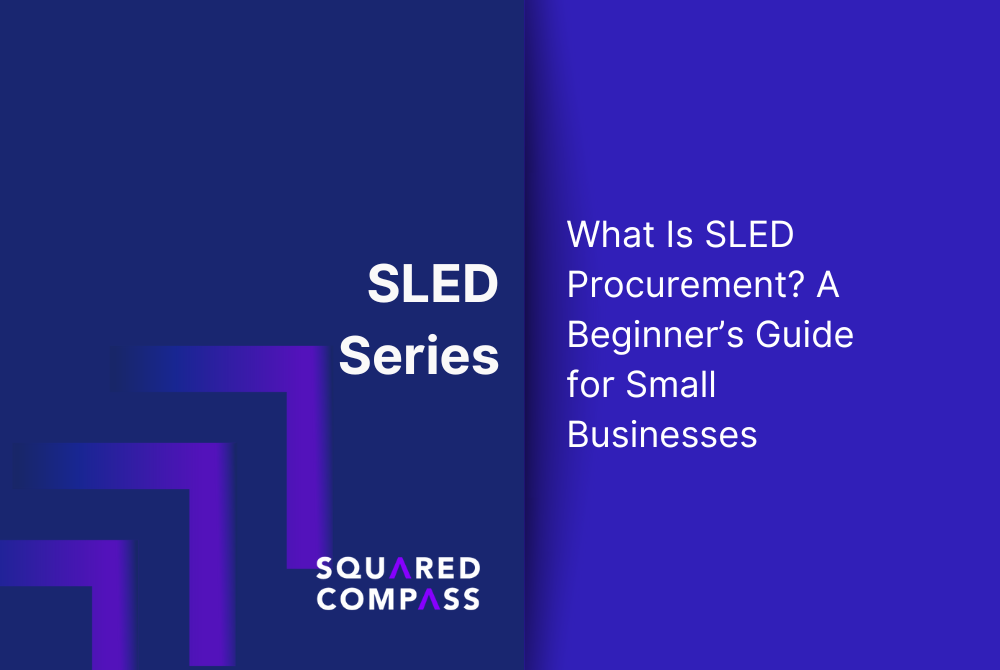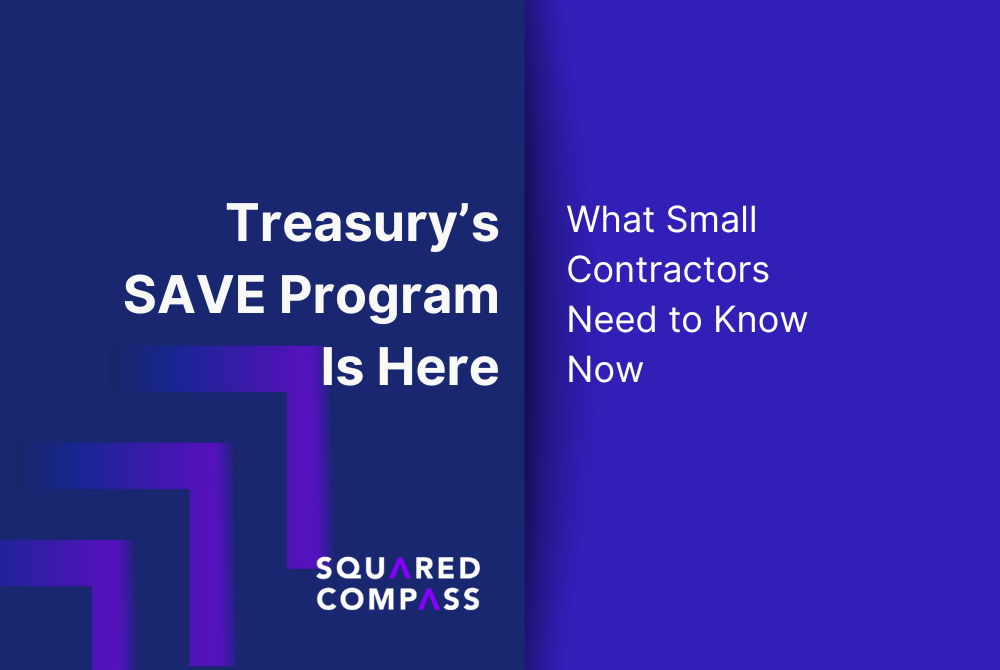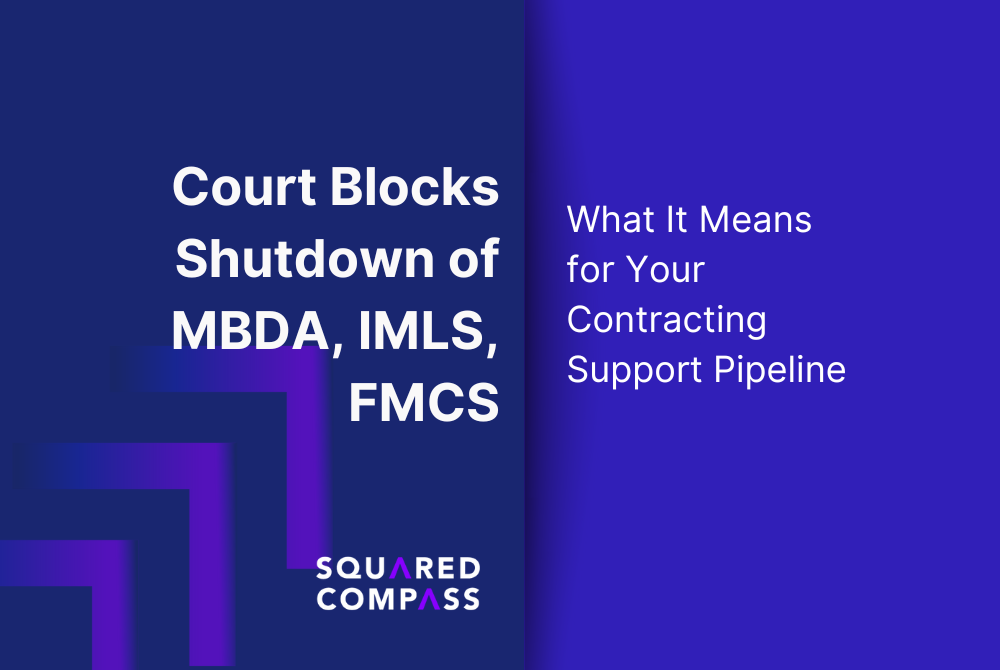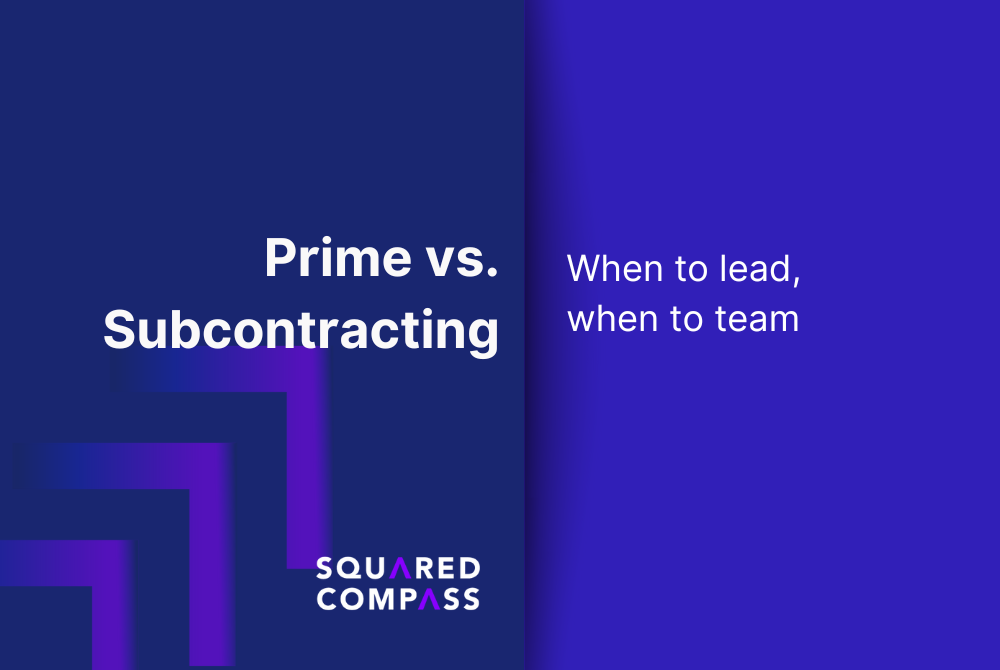Filter Resources by Tags

What Happens After a Shutdown Ends? Here’s How Small Contractors Can Win the Rebound
If you think the end of a government shutdown means business as usual, think again. For small government contractors, what comes next can be a frenzy of backlogged awards, accelerated timelines, and unpredictable agency behavior. But there’s good news: those who prepare during the downtime are the ones who win the contracts once the funding floodgates reopen.

SLED Contracting Isn’t Just Bidding, It’s Navigating Red Tape and Building Trust
If you’re a small business owner used to the federal space, competing for SLED (state, local, and education) contracts can feel like entering a parallel universe. The money’s there, the opportunities are real, but the rules? They vary wildly. Welcome to the land of state-specific compliance checklists, local bonding requirements, diversity documentation that rivals a federal proposal, and a whole lot of unspoken rules about who knows you and who trusts you.

2025 Government Shutdown Showdown: What Small GovCon Businesses Need to Know (and Do) Right Now
As of October 1, 2025, the U.S. federal government is officially shut down. For small businesses with active federal contracts, or those hustling to get into the government procurement game, this isn’t just a bureaucratic hiccup. It’s a direct hit to your pipeline, payments, and plans.
Whether you’re holding an active 8a contract, waiting on your SBA 8a certification, or ramping up proposal writing efforts for a fresh SAM.gov opportunity, here’s what’s happening, why it matters, and how to protect your business in the meantime.

Certifications & Set-Asides in the SLED Market: What You Need to Know Before You Bid
If you’ve already dipped a toe into the federal contracting world, you’re probably familiar with SBA 8a certification, women owned small business certification, and other set-aside programs that flow through federal procurement. But when you shift gears and look at the SLED market, state, local, and education agencies, you’re playing by a different set of rules.

2025 U.S. Government Shutdown: Agency-by-Agency Contingency Plan Breakdown
Discover how the 2025 U.S. government shutdown will impact federal agencies. Get a full agency-by-agency breakdown of contingency plans, including furloughs, essential services, and which programs will continue.

SLED Series: Finding the Right SLED Opportunities: Portals, Forecasts & Partners
If you're a small business trying to break into government contracting, you’ve likely heard the term SLED—that’s state, local, and education procurement. Compared to the federal space, SLED is a patchwork of thousands of independent agencies, each with their own rules, platforms, and processes. Which means finding the right opportunities can feel like hunting for needles in a haystack… across 50 different fields.

Government Shutdown Survival Guide for Business Owners: How to Protect Your Contracts and Cash Flow (Repost from March 13th, 2025)
Government shutdowns aren’t just political drama—they have real consequences for businesses, especially those with federal contracts.

SLED Series: What Is SLED Procurement? A Beginner’s Guide for Small Businesses
If you’ve been laser-focused on chasing federal contracts but haven’t looked into SLED procurement, you’re leaving serious money on the table. SLED stands for State, Local, and Education, a massive and often-overlooked public sector market that’s rich with opportunity for small and midsize businesses.

SBIR Series: Budgeting, Compliance & Post-Award Basics
This is the final installment in our five-part SBIR series designed to help small businesses write better proposals and actually transition to Phase II/III. We’ve already talked about a Fit Brief (why you and why now), aligned it with the right agency and topic, scoped a defensible Phase I Mini-Plan, and crafted a go-to-market strategy in the form of a Commercialization & Transition One-Pager. Now it’s time to bring it home, by building a clean, compliant submission packet and setting yourself up to survive what comes after the award.

SBIR Series: Commercialization That Converts: Real Paths to Phase II/III
Too many Phase I SBIR proposals end with the same vague promise: “We’ll figure out commercialization later.” But kicking the can down the road doesn’t cut it anymore, not with more agencies pushing for measurable transition plans and defendable Phase III pathways. If you’re serious about moving from prototype to purchase order, you need a commercialization approach that converts.

SBIR Series: The Phase I Work Plan (Without the PhD-Speak)
If you're tackling your first SBIR or STTR proposal, welcome to the part that makes reviewers either nod in confidence or toss your file into the “nah” pile. It’s not about showing off credentials or flooding them with jargon. Your Phase I Work Plan is where you convince reviewers that (1) you’re solving a real problem, (2) you know exactly how to test your idea, and (3) you’re not guessing, you’re planning. Let’s walk through how to write a feasibility plan that earns trust, not shrugs.

SBIR Series: Matching Your Tech to the Right Agency & Topic
So you’ve nailed down your problem, its technical readiness level (TRL), and your end user. Great start. But now comes the part where most small businesses stall out or burn out, trying to find a match in the messy jungle of SBIR topics. Instead of “spray and pray,” it’s time to make your agency targeting deliberate and data-driven.

SBIR Series: Fit, Feasibility, and a Go/No-Go You Can Trust
The Small Business Innovation Research (SBIR) program dangles a juicy carrot: non-dilutive federal funding to turn your tech idea into a reality. No equity. No payback. Just funding to validate, build, and scale. Sounds like a no-brainer, right?
Not so fast.

Treasury’s SAVE Program Is Here: What Small Contractors Need to Know Now
The Treasury Department and GSA just rolled out a bold new initiative aimed at cutting contract waste: the Savings Award for Verified Efficiencies (SAVE) Program. This is more than just another performance metric. SAVE puts cash on the table for federal employees who recommend legitimate contract cancellations or descoping actions. If their idea sticks, they can earn up to $10,000 per contract action. For contractors, especially small businesses, this initiative introduces both risk and opportunity.

FAR’s Plain-Language Overhaul Is Here: What Small Contractors Need to Know Now
The federal government just dropped a sweeping rewrite of four key parts of the FAR, and while it won’t shake the ground under your feet, it does shift the terrain. The changes are designed to streamline language, not add new rules. But if you’re a small business working in federal procurement, it’s time to update your playbooks.

We’re In: Squared Compass Awarded Spot on Texas DBITS
It’s official, Squared Compass has been selected as an approved vendor on the Texas DBITS contract vehicle. This is a major milestone for our team, our mission, and the clients we serve.
We’ve always said that smart strategy wins contracts. Now we get to prove it at a whole new level, as a pre-qualified DBITS vendor, ready to support IT initiatives across the State of Texas. From proposal support to procurement strategy to full-spectrum delivery, we’re showing up stronger than ever.

Court Blocks Shutdown of MBDA, IMLS, FMCS: What It Means for Your Contracting Support Pipeline
A federal appeals court just stopped the Trump administration from dismantling three key support agencies for small businesses: the Minority Business Development Agency (MBDA), the Institute of Museum and Library Services (IMLS), and the Federal Mediation and Conciliation Service (FMCS). If you’re a small contractor, or advising one, this is a big deal. It means critical resources that help you get certified, grow, and avoid labor disruptions just got a lifeline.

SBA’s Size Standards Are About to Shift , Here’s What Small GovCon Firms Need to Do Now
The Small Business Administration is gearing up to raise the revenue-based size standards that determine whether your business qualifies as “small” under federal rules. If you rely on 8a contracts services, women owned small business certification, or are pursuing disabled veteran government contracts, this could be one of the most important regulatory changes of the year.

FAR vs. Agency Supplements: What Changes, What Doesn’t, And Why It Matters for Small Contractors
If you're navigating the federal procurement maze, you’ve probably heard of the FAR, the Federal Acquisition Regulation. It's the government-wide playbook for how federal agencies buy goods and services. But what many small businesses don’t realize until it’s too late is that the FAR isn’t the only rulebook. Agency-specific supplements, like the DFARS for the Department of Defense or the GSAR, which is part of the broader GSAM for GSA, can and do change the rules.

Prime vs. Subcontracting: When to lead, when to team
Two developments just shifted the prime-vs-sub calculus for small federal contractors. First, the Pentagon finalized the CMMC rule; requirements start appearing in solicitations beginning 11/10/2025 with a phased rollout over three years. Translation: cybersecurity readiness is no longer a “someday” item, your role choice will hinge on your CUI/FCI exposure and your readiness to pass assessments. Second, access to huge swaths of services and IT work continues to flow through mega-vehicles—OASIS+ (still navigating protests), SEWP V (extended through 10/31/2025 while SEWP VI moves forward), and CIO-SP4 (still in flux). If you’re not on a vehicle, you’ll often need to team with someone who is.
